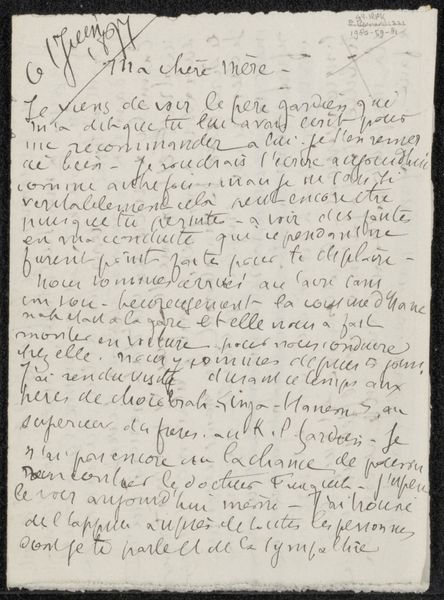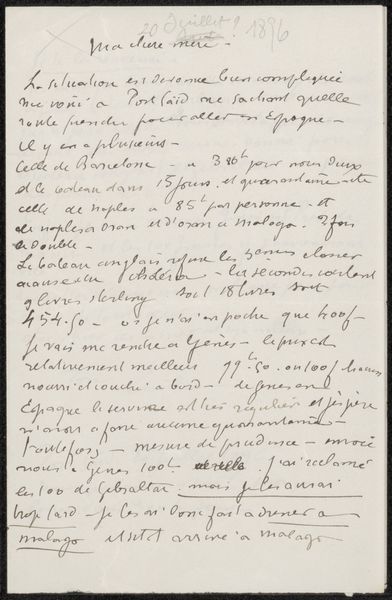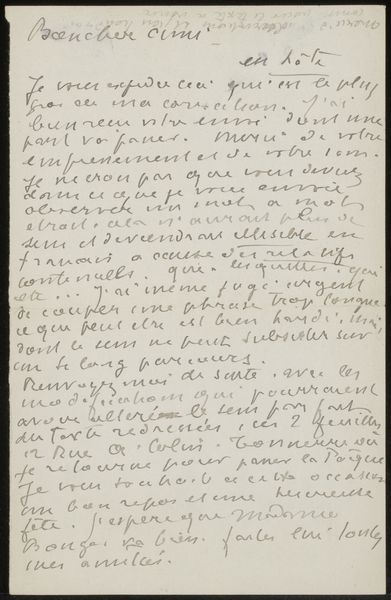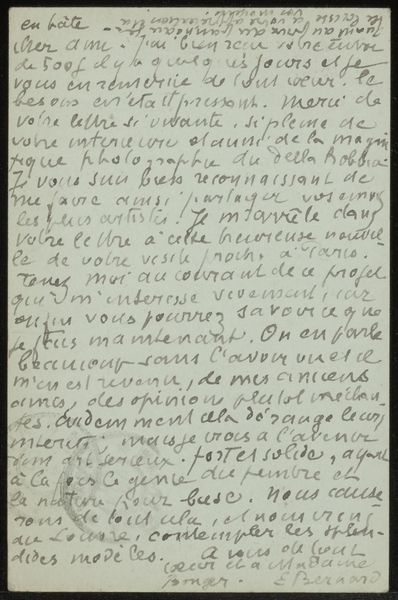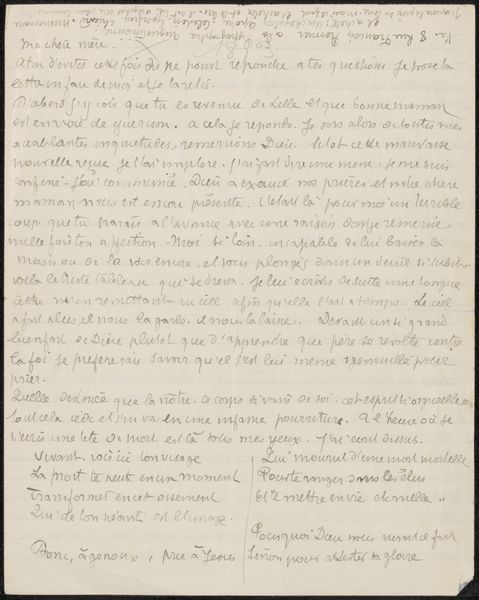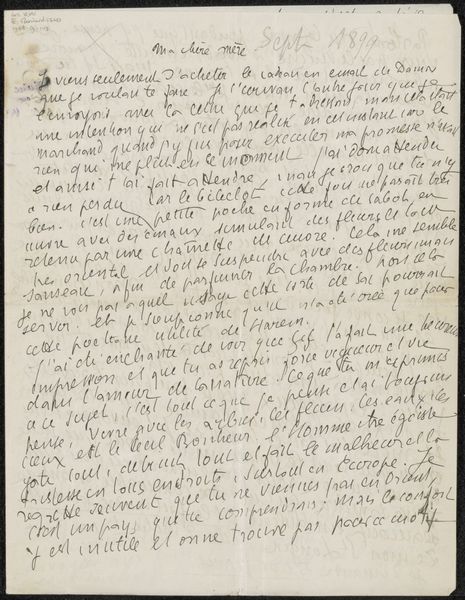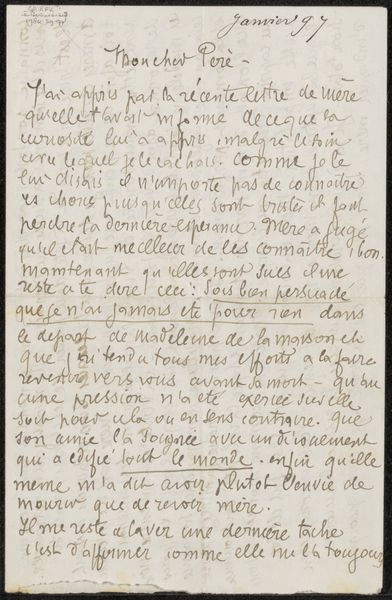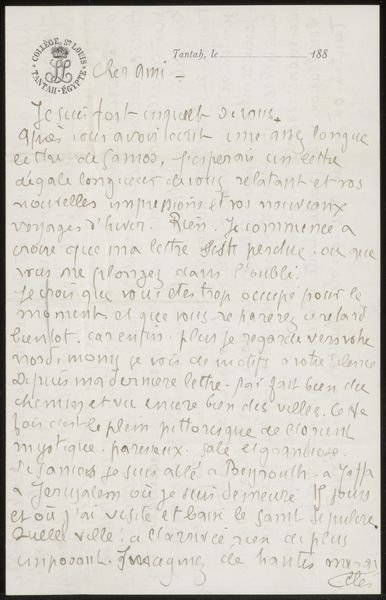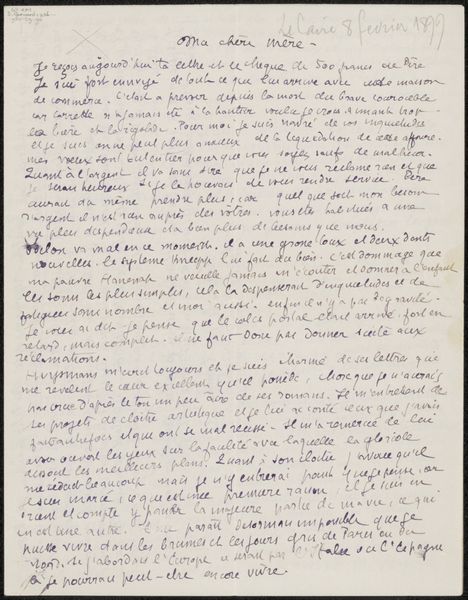
paper, ink
#
hand-lettering
#
hand drawn type
#
hand lettering
#
paper
#
personal sketchbook
#
ink
#
sketchbook drawing
#
post-impressionism
Copyright: Rijks Museum: Open Domain
Curator: Here we have “Brief aan Andries Bonger,” a letter from Emile Bernard, likely dating from before 1899. What strikes you first? Editor: The density of the text, certainly. It’s an overwhelming block of handwriting, giving a sense of urgency or perhaps…compulsion? The page feels filled, almost bursting with information. Curator: Absolutely. This piece offers insights into Bernard's social and economic conditions. Letters like these show the networks artists relied on for support. He's writing to Andries Bonger, van Gogh’s brother-in-law, who provided financial assistance and promoted their work. The materiality of the paper, the ink, they speak to the everyday realities of artistic creation, far removed from idealized notions of genius. Editor: I'm drawn to the rhythms created by the handwritten text. The loops and connections, the variations in pressure and slant. There’s an energy in the script that transcends the literal meaning of the words. Look how the handwriting creates shapes—organic forms spreading across the page, like a field seen from above. Curator: Note how Bernard uses the very act of writing—a form of labor—as a means to solidify his connection with Bonger, highlighting the dependence artists had on their patrons. The letter becomes an artifact of this exchange. It allows us to think about who had the means to produce art, whose stories get told, and how the system of patronage influenced artistic output. Editor: Beyond its social function, it’s a dance between the visible and the legible, challenging how we perceive textual art. There is also something incredibly vulnerable about the act of writing—sharing inner thoughts that others have a chance of witnessing, as the marks linger on the surface long after the writer is gone. Curator: Precisely. By examining such letters, we gain a deeper understanding of the labor and support structures inherent within artistic practices, urging a reconsideration of art’s intrinsic economic ties. Editor: Yes, analyzing the formal elements allows us to see a different dimension; handwriting is more than just transcription; the handwriting holds a story, a personal narrative separate from what's actually written down. It opens our eyes to another story hidden on the surface.
Comments
No comments
Be the first to comment and join the conversation on the ultimate creative platform.
